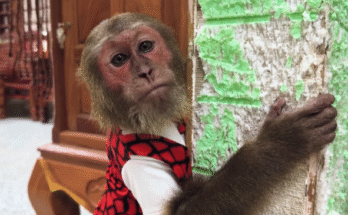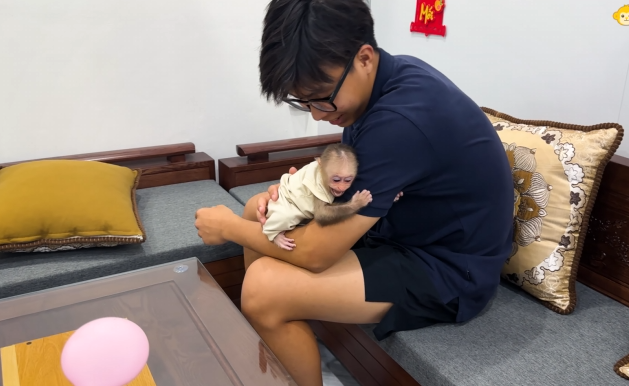
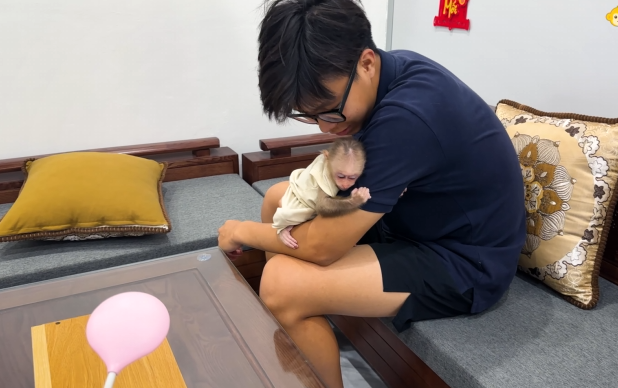
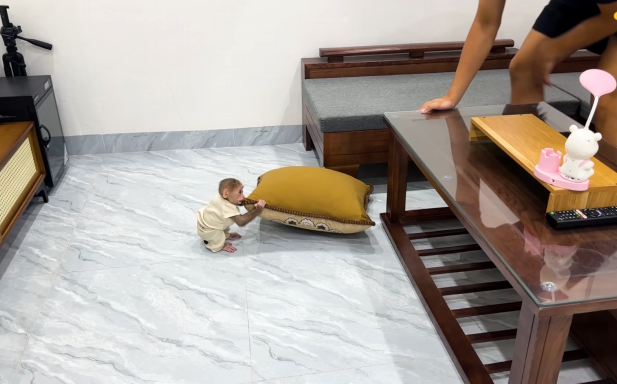
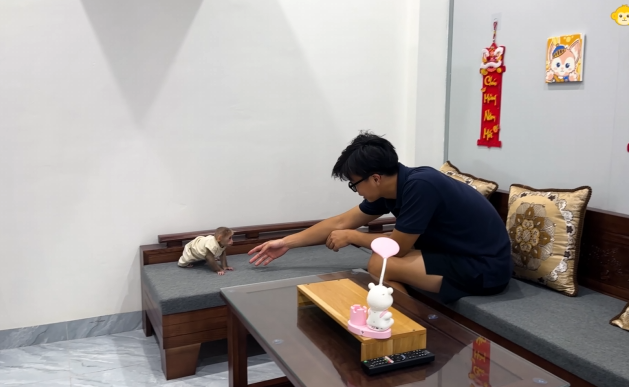
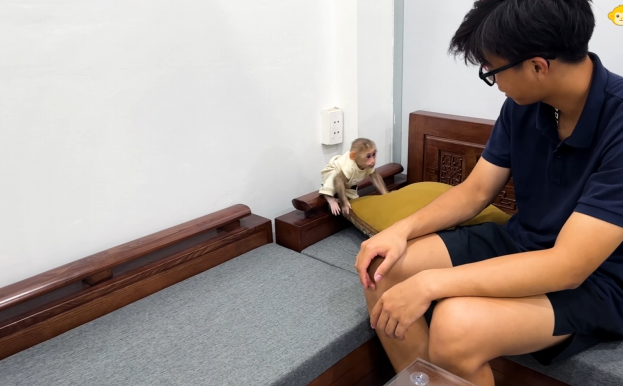
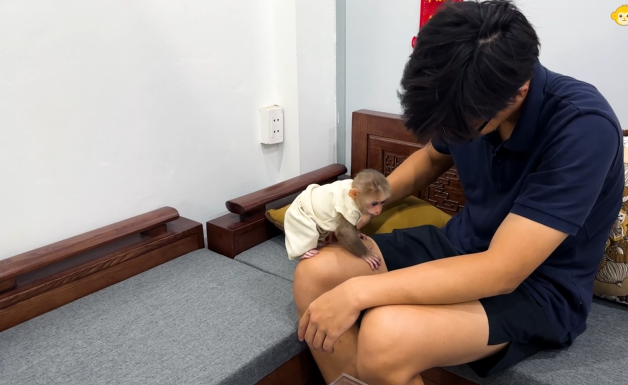
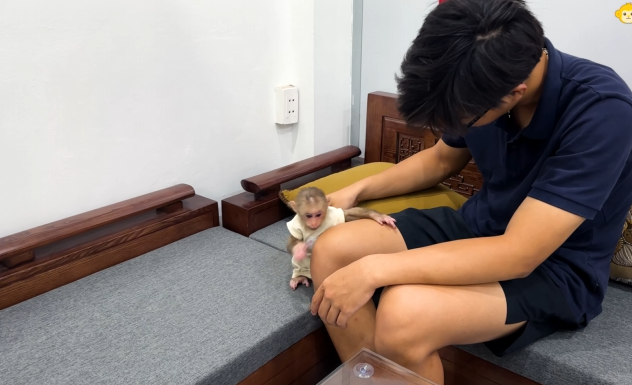
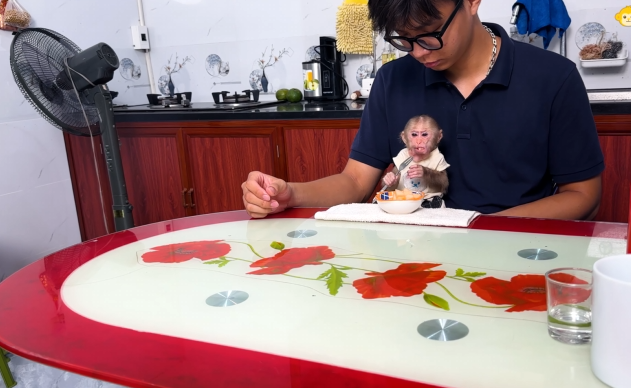
Lala, the little bundle of joy with sparkling eyes and endless energy, was the heart of the children’s world. She wasn’t just a pet or a monkey—they considered her family. Every morning, as the sun peeked over the trees, Lala would be the first to spring into action, bouncing into the courtyard to greet the children with squeals, playful slaps, and her signature hugs. Her bond with them was something no adult fully understood, especially not CEO Kien.
CEO Kien, a tall and serious man with a heart hidden under layers of duty, had always admired Lala’s intelligence. He had rescued her when she was a tiny baby and had given her the best care anyone could offer. But now, with Lala growing stronger and cleverer every day, he believed it was time for her to be in a more structured environment—perhaps with professionals, where she could “develop properly,” as he liked to say.
But Lala had her own ideas.
One warm afternoon, CEO Kien announced his plan. “Lala needs to stay at the main house starting tomorrow,” he told the children gently. “She’ll have more space, proper food, and trainers to help her.”
The children fell silent. Their eyes darted toward Lala, who was sitting on Yen Nhi’s lap, nibbling a banana. She sensed something was wrong. Her ears perked up, and she stopped eating.
Yen Nhi whispered, “Lala, they want to take you away.”
In an instant, Lala tossed the banana to the side, stood up on her hind legs, and let out a dramatic “Eek!” before dashing off. The children chased her through the garden, laughing nervously, unsure if she was playing or genuinely upset.
The next morning, CEO Kien arrived with a small crate. He gently patted Lala on the head. “Come on now, Lala. Let’s go.”
But Lala refused.
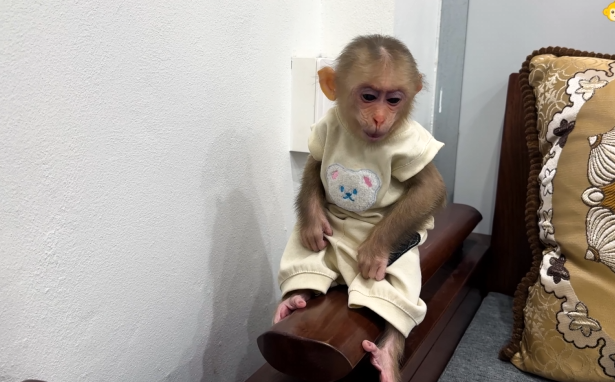

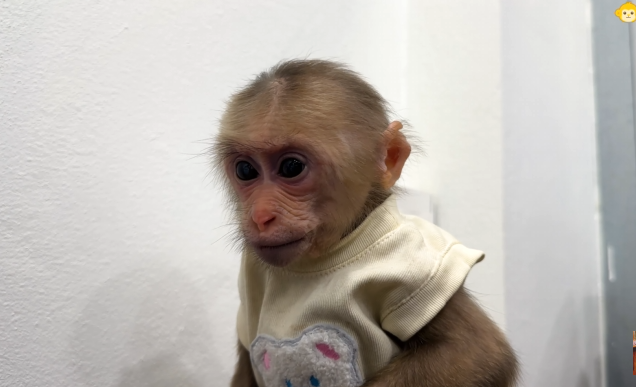
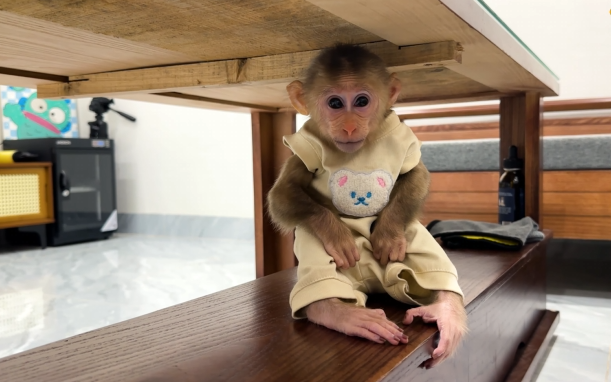
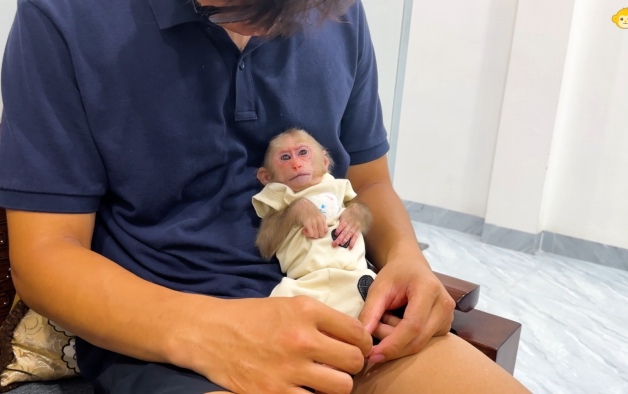
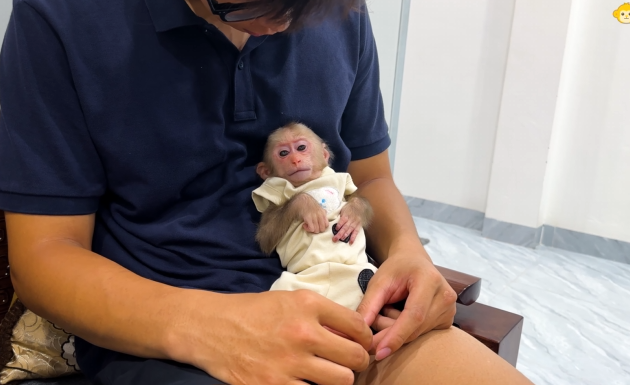
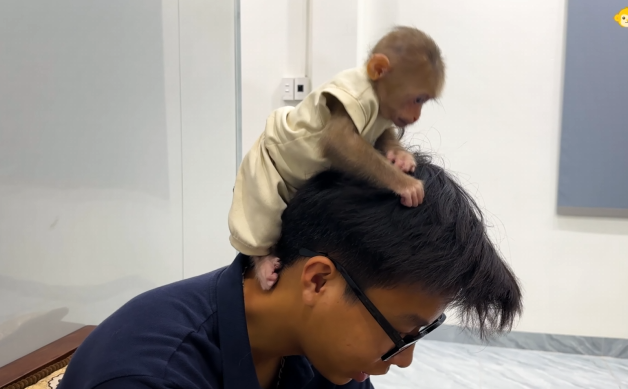
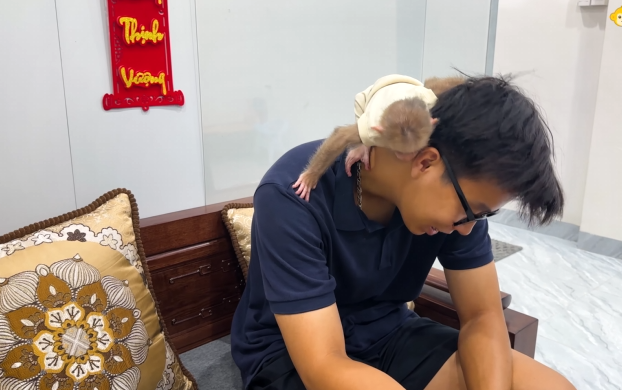
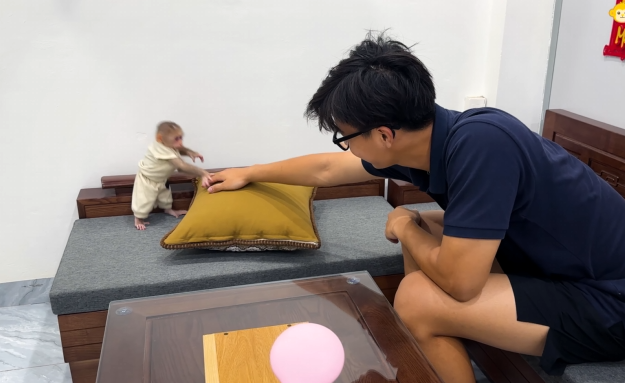
She clung tightly to little Minh’s shoulders, wrapping her arms around him as if to say, “I’m not going anywhere.” When CEO Kien reached out to take her, she jumped to Linh, then to the fence, then scampered to the swing set where she pouted, crossed her arms, and turned her back to everyone.
“She’s protesting,” said one of the kids.
Indeed, Lala had declared a protest in the cutest, most mischievous way possible. She wouldn’t eat her favorite fruits, turned over her water bowl, and even stole CEO Kien’s sunglasses when he wasn’t looking, darting up a tree and chirping triumphantly.
Kien tried to remain firm, but even he couldn’t help chuckling. “Lala, you rascal,” he muttered, climbing halfway up the tree with the kids cheering below.
When he finally retrieved his sunglasses, Lala leapt from the branch, landing softly on Yen Nhi’s lap, looking smug. She buried her face in the girl’s chest, clearly saying: “This is where I belong.”
CEO Kien sighed. “Lala, it’s for your own good.”
Lala responded with a loud yawn, dramatically turning her back to him again. She then grabbed a marker and—miraculously—scribbled something on the pavement. It wasn’t quite legible, but the kids gasped.
“She’s trying to write ‘No’!” one shouted.
And that was only the beginning.
The next few days turned into a charming rebellion. Lala refused to be caught. When Kien brought fruit to lure her, she took it and threw it back at him, giggling. When he tried to reason with her, she covered her ears with her tiny hands and shook her head.
But she wasn’t being mean. In fact, she was more loving than ever with the children. She cuddled them more, groomed their hair like a big sister, and even helped baby Tien build a Lego house. She clearly wanted to prove a point: she belonged with them, not away from them.
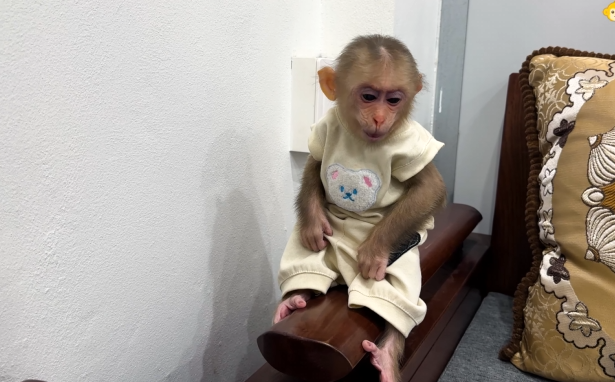
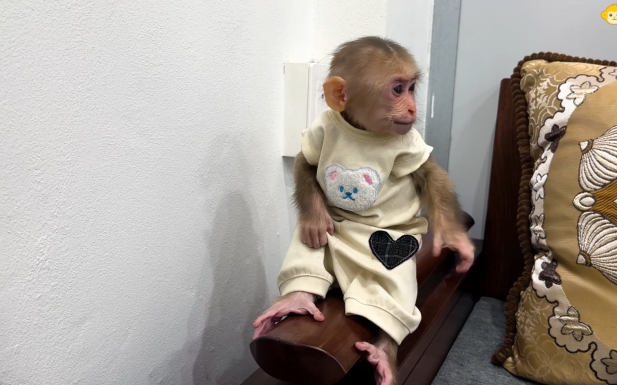
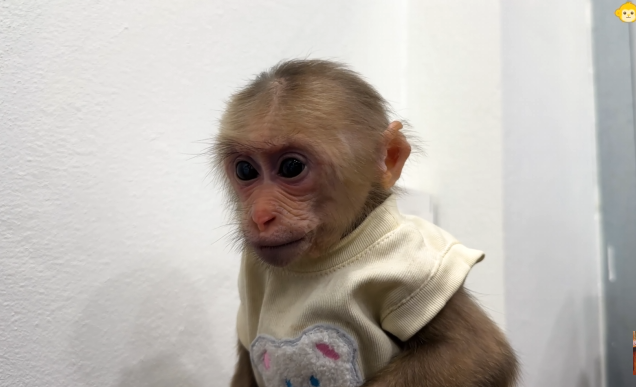
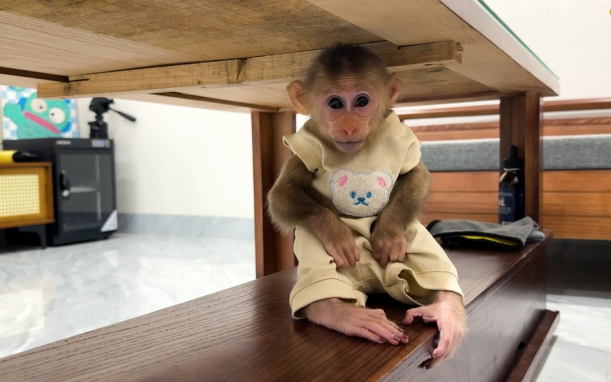

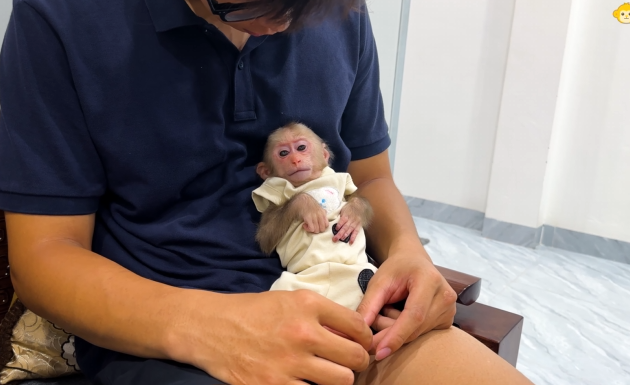
Eventually, Kien decided to take a different approach.
One morning, he sat down with all the children and Lala in a circle. “Okay,” he said, “I was wrong to make this decision without including Lala and you all. Let’s talk.”
Lala tilted her head, curious.
He continued, “Lala is smart. Maybe too smart. She wants to stay, and you all want her here. But I also want her to learn, to grow. So what if we create a learning corner here, for her? A place where she can be both with you and get structured learning?”
The children gasped with joy. Lala blinked. Then, slowly, she stepped toward CEO Kien and—gently—placed her tiny hand on his. The room erupted in applause.
From that day on, Lala had her own “learning zone.” It was a corner of the children’s playroom equipped with puzzles, games, and even a little chalkboard. Every morning, she would put on a little backpack and “go to class” with the kids, who took turns being her “teacher.” She loved it—especially when she got a banana or mango slice as a reward for solving a puzzle.
CEO Kien visited often, and Lala never protested again. She’d greet him with a smile, give him back his sunglasses (which she occasionally still hid for fun), and then run off to play with the kids.
It became clear to everyone that Lala didn’t just love the children—she needed them. And in her own clever way, she had taught the adults around her a valuable lesson: love, joy, and family don’t always follow rules or structure. Sometimes, the heart knows best.
And so, the little monkey who once staged the cutest protest in the world became the official mascot, playmate, and “student” of the household—right where she belonged.
The End.
